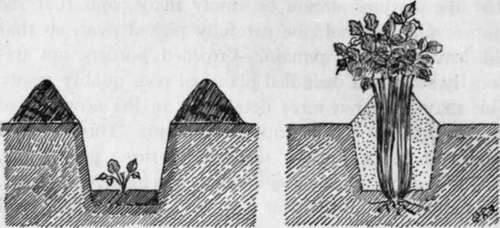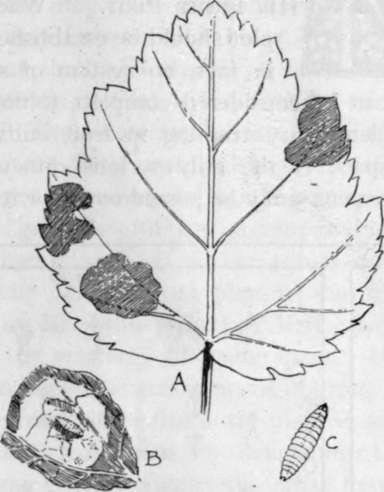Celery
Description
This section is from the book "School Gardening", by W. Francis Rankine. Also available from Amazon: School Gardening.
Celery
Celery is a useful and health-giving salad, and wherever possible it should be included in the cropping of the school plots. However, it is out of the question if the plots are small and must only be grown on rod plots, or, of course, those of larger area.
The seeds are sown in gentle heat in February, and the seedlings placed three inches apart in boxes. These are hardened off and in June and onwards they will be ready for the trenches. The soil upon which Celery is to be grown must be thoroughly prepared in the previous autumn. The trench should be from eight inches to a foot in depth, according to the soil, and it may be one foot in width ; deep planting is desirable. The base of the trench must be thoroughly broken up with the fork, and some well-decayed manure should be worked into the soil. A little top soil should be sprinkled into the bottom of the trench in order to prepare a rich bed for the plants. The plants are set out nine inches apart.
In order to obtain blanched sticks, the plants are earthed up as they make progress ; they should be at least three parts developed before this is done. In " earthing " the soil is gradually moved into the trench, and care must be taken that the hearts of the celery are not soiled. Each plant ought to be carefully tied before the " earthing " is started.

Fig. 52. celery trench.
The Celery Fly
This insect pest attacks Parsnips as well as Celery. The presence of the Celery Fly is indicated by the appearance of small gray blisters, or patches, on the leaves of the plant. Inside this small swelling, safely hidden between the leaf-skins, is a small maggot (the larva of the Fly) which mines its way through the leaves and feeds on the plant juice. This greatly interferes with the work of the leaves, and consequently the development of the plant is hindered. The Fly appears in April and places its eggs on the upper side of Celery and Parsnip leaves. When the larva emerges it proceeds to take up its quarters in the leaf itself and the grayish brown blisters, already described, are formed.
The treatment of this pest is more or less one of prevention. The pupae of the fly spend the winter in the soil, and therefore the top layers of the soil should be treated with gas-lime. Infested leaves must be carefully picked off and burned, and the plants may be sprayed with a weak paraffin emulsion in April, or dusted when damp from the earliest stages with a mixture of soot and wood ashes.

Fig. 53. Celery Fly (Tephritis Onopordinis).
The drawing shows a parsnip leaf attacked by the fly (A). B.-An infested area (natural size). c.-The maggot.
Continue to:
